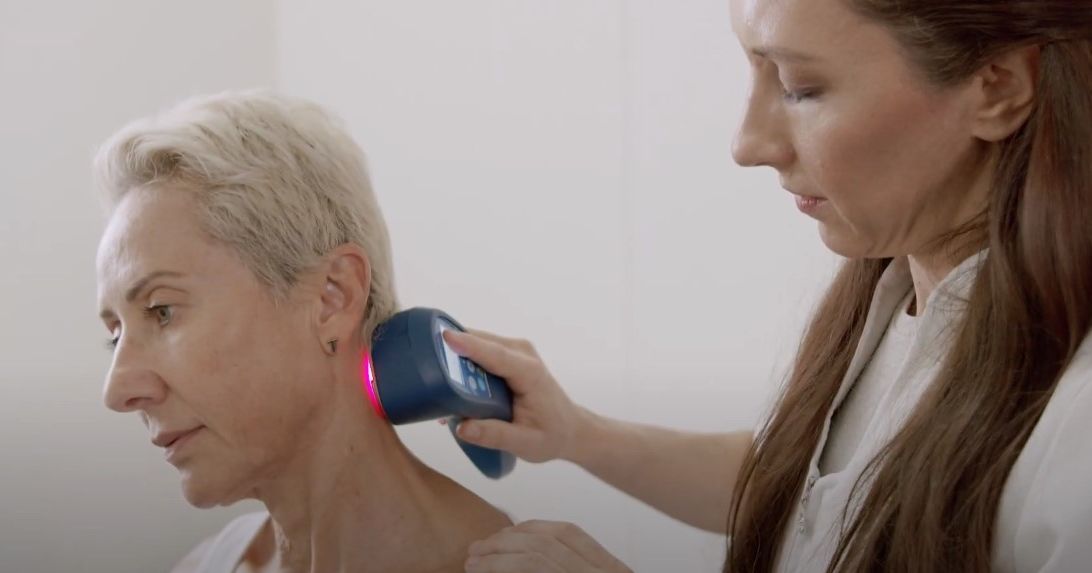Ulnar nerve entrapment is the second most common neuropathy (following the entrapment of the median nerve) occurring in the upper extremity. Ulnar nerve entrapment generally occurs over the elbow region, in particular the cubital tunnel and the groove over the epicondyle. It can also occur in the wrist in a location referred to as the guyon canal (over the base of the pinky finger). Pressure building up around the nerve or compressing the nerve can lead to muscular dysfunction as the ulnar nerve supplying the muscle isn’t able to generate the appropriate stimulus because of the entrapment.
Common Signs and Symptoms include of trapped elbow nerve: a) Paralysis of muscles in hand : Hypothenar Muscles, adductor pollicus, dorsal/palmar interossei and flexor pollicus brevis b) Tingling and numbness over the pinky finger and the ulnar half of the ring finger c) Loss of grip strength d) Loss of intrinsic muscle function of the wrist e) Burning sensation over the 4th and 5th fingers f) Ulnar claw hand may present
Mechanism of injury to trapped elbow nerve: Possible causes of ulnar neuropathy include trauma to the elbow or the wrist, arthritis and overuse of the extremity mainly in sports including, baseball (pitchers), cycling and wheelchair sports.
Orthopaedic Tests: Tests designed to recreate the patient’s symptoms including numbness, tingling and paraesthesia in the ulnar nerve distribution

1. Tineal’s sign- includes continuous tapping of the medial elbow over the proximal ulnar 2. Elbow Flexion test- Patient asked to make a ‘w’ by flexing their elbow and asked to hold position for three minutes 3. Pressure provocation test- applying pressure over the elbow while flexed at 20o 4. Froment sign- Patient grips a piece of paper and asked to hold it while examiner pulls. If ulnar neuropathy’s present the patient will not be able to complete the test and results in using the tip of their finger to grip the paper instead of the pulp.
Conservative treatment of trapped elbow nerve is the preferred means of managing ulnar neuropathy. Modifying certain activities that induce the pain, wearing splints to support the elbow and minimal flexing of the elbow will actively benefit the patient. Surgery is also another option that may be pursued in serious cases but generally looking after the area by not doing anything too vigorously will enhance the recovery time.
Management of ulnar neuropathy as well as any other neuropathies can be treated by cold laser therapy also known as low-level laser therapy. Cold Laser therapy is used in many medical professions in the aid of reducing inflammation to muscles and improving circulation to them as well as nerves.
Cold laser therapy is cost effective and has proven to show major benefits in managing neuropathy disorders. Low-level laser therapy treats ulnar neuropathies by decreasing inflammation that’s caused the entrapment and rejuvenate the damaged nerve by circulating blood and oxygen to the site of injury for a speedy recovery. The treatment generally consists of 2-3 weekly visits with the amount of visits dependent upon the severity of the injury. Sessions generally last around 20 minutes with the cold laser place over the elbow for 5 minutes at a time moving around the joint.
So if you’re suffering from any of the symptoms as mentioned above, or your doctor has diagnosed you with ulnar neuropathy, Lakeside Laser is right for you. Lakeside Laser is located in Gnangara, WA 6077, and is proud to support clients from across Perth, including Maylands, Morley, Yokine, Bayswater, Greenwood, Hillarys, Two Rocks, Woodvale, Burns Beach, Leederville, and Joondalup.
Dr Linda Schiller, our experienced laser technician, provides personalised Cold Laser / Low Level Laser Therapy with care and precision. Whether you're managing pain, inflammation, or a musculoskeletal condition, Linda is here to help.
For further information or to book an appointment with Dr Linda Schiller, please call 0468 429 111 or visit our website at www.lakesidelaser.com.au.



